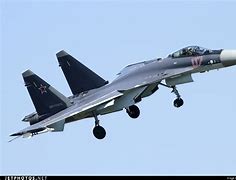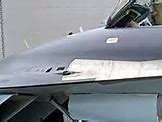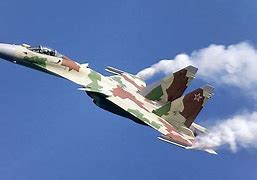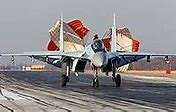
The recent delivery of new Su-35 fighter jets to the Russian Air Force has come amid a tumultuous period for the country’s aerial combat capabilities.

The Su-35, an advanced fourth-generation fighter developed from the venerable Su-27, was designed to match the prowess of Western aircraft such as the F-15 Eagle and F-14 Tomcat.

With Moscow having sustained significant losses of its advanced airframes in the conflict with Ukraine, the new batch of Su-35s from United Aircraft Corporation represents a bid to shore up the Russian Air Force’s strength.

Open-source intelligence tracker Oryx has noted that “Moscow has lost at least two dozen of its Su-34s and a half dozen of its Su-35s in combat.”

The Su-35 Flanker’s capabilities include advanced radar with a detection range of over 250 miles and a diverse armament load, comprising long-range air-to-air missiles and the Oniks anti-ship cruise missile.

The aircraft also boasts countermeasures including a radar warning system, jammer, and a 30mm GSh-30-1 gun.

Despite these formidable specifications, the Su-35 has faced unexpected challenges in the Ukrainian theater.

Forbes reported an alarming rate of losses for the Russian Air Force, highlighting that “The Russian Air Force has lost 95 jets since February 2022… In [February 2024], however, the air force has written off warplanes at a rate of 60 per month.”

This trajectory, if sustained, raises questions about the viability of Russia’s airpower in the ongoing conflict.

The Su-35’s struggles come at a time when Russia is also grappling with the development and deployment of its fifth-generation fighters, notably the Su-57 Felon.

With only a limited number of operational Su-57s due to developmental and economic constraints, Russia has been conservative in employing this platform, keen to avoid the loss of its most advanced fighter and the sensitive technology it contains.

Parallel to the Su-57’s troubles is the Su-75 Checkmate, a lighter and ostensibly more cost-effective fifth-generation fighter aiming to compete in the global market.

However, the conflict in Ukraine and associated resource challenges have delayed development and deterred potential foreign partners, with countries like the UAE and India backing away from earlier interests.

The Russian fighter jet landscape reflects a broader struggle as the country seeks to maintain its defense capabilities and export ambitions amidst an increasingly complex and resource-draining conflict.

The recent induction of new Su-35s indicates Moscow’s commitment to bolster its air forces; yet, the sustainability of this effort remains to be seen as losses mount and economic pressures intensify.
Relevant articles:
– Russia’s Su-35 Flanker Fighter Nightmare Just Keeps Getting Worse , National Intererst, 05/11/2024
– Russia’s Su-57 Felon Stealth Fighter Looks Like a Giant Mistake, The National Interest Online, 05/11/2024
– Russia’s Su-75 Checkmate Looks Like Russia’s Doomed Nightmare Fighter, The National Interest Online, 05/10/2024
– Su-35 Fighter Deal With Russia Very Much Intact, Despite F-15EX & Rafale Pacts, Indonesian Ambassador Says, EurAsian Times, 05/09/2024
– This chart shows all of the versions of Russia’s 5th-generation fighter jet, Yahoo Singapore News, 05/08/2024

